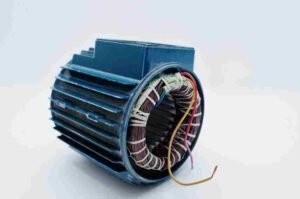Introduction to impeller vs agitator
Mixing is a crucial process in industries like chemical processing, pharmaceuticals, food production, and wastewater treatment. Two common devices used for mixing are impellers and agitators. While both serve the purpose of blending liquids or suspensions, they operate differently and are suited for specific applications.
In this guide, we’ll explore the differences between impellers and agitators, their working principles, advantages, and ideal use cases.
What is an Impeller?
An impeller is a rotating component in a pump or mixer that transfers energy from the motor to the fluid, creating flow and mixing. Impellers are commonly found in centrifugal pumps, mixers, and blenders.
Types of Impellers
- Radial Flow Impellers – Push fluid outward perpendicular to the shaft (e.g., Rushton turbine).
- Axial Flow Impellers – Move fluid parallel to the shaft (e.g., marine propeller).
- Mixed Flow Impellers – Combine radial and axial flow for moderate shear and pumping.
Advantages of Impellers
✔ High efficiency in fluid movement
✔ Suitable for high-speed mixing
✔ Better for low-viscosity liquids
✔ Compact design
Common Applications
- Chemical processing
- Water treatment
- Food and beverage mixing
- Pharmaceutical manufacturing
What is an Agitator?
An agitator is a mechanical device used to stir or mix fluids, typically in tanks or vessels. Unlike impellers, agitators often have larger blades or paddles and operate at lower speeds.
Types of Agitators
- Paddle Agitators – Flat blades for gentle mixing.
- Turbine Agitators – High-shear mixing for viscous fluids.
- Anchor Agitators – Scrapes tank walls for thick mixtures (e.g., paints, adhesives).
Advantages of Agitators
✔ Better for high-viscosity fluids
✔ Effective for solid-liquid suspensions
✔ Can handle large tank volumes
✔ Low energy consumption at slow speeds
Common Applications
- Paint and coating production
- Wastewater sludge mixing
- Pharmaceutical slurry blending
- Food processing (dough, syrups)
Key Differences: Impeller vs Agitator
| Feature | Impeller | Agitator |
|---|---|---|
| Speed | High RPM | Low to medium RPM |
| Fluid Type | Best for low-viscosity liquids | Handles high-viscosity fluids |
| Design | Compact, blade-based | Larger paddles or anchors |
| Mixing Action | Creates flow & shear | Promotes bulk movement |
| Energy Use | Higher at high speeds | Lower at slow speeds |
| Applications | Pumps, reactors, blenders | Tanks, storage vessels, thick mixtures |
Which One Should You Choose?
The choice between an impeller and agitator depends on:
- Viscosity – Impellers for thin liquids, agitators for thick mixtures.
- Mixing Intensity – Impellers for high shear, agitators for gentle blending.
- Tank Size – Agitators for large tanks, impellers for compact systems.
When to Use an Impeller?
✅ Fast mixing required
✅ Low-viscosity fluids (water, chemicals)
✅ High shear applications (emulsions, dispersions)
When to Use an Agitator?
✅ Thick, viscous materials (paints, syrups)
✅ Large tank mixing
✅ Gentle blending without high shear
Conclusion
Both impellers and agitators play vital roles in industrial mixing, but they serve different purposes. Impellers excel in high-speed, low-viscosity applications, while agitators are better for slow, high-viscosity mixing.
Understanding their differences ensures optimal performance, energy efficiency, and product quality in your processes.
Need help selecting the right mixer? Consult an expert to determine whether an impeller or agitator suits your needs best!
Did you find this guide helpful? Share your thoughts in the comments or explore our other articles on industrial mixing technologies!
For more visit our website Homethreads







